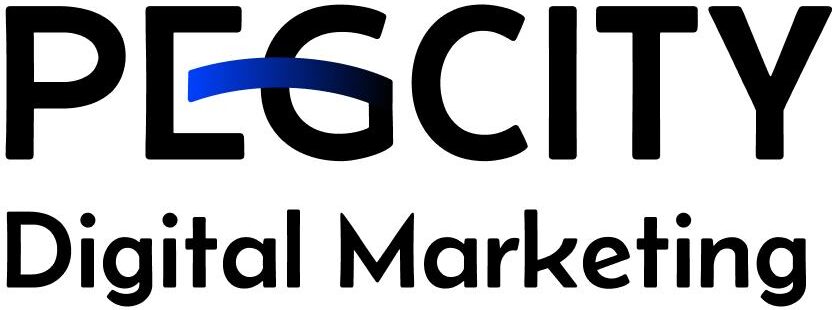What is Generative Engine Optimization (GEO)?
Generative Engine Optimization (GEO) is a strategic content approach designed to align digital materials with how AI platforms like ChatGPT, Google’s SGE, and Bing Copilot process and summarize information. Unlike traditional SEO, which focuses on search rankings, GEO ensures content is structured for AI visibility and accurate representation in automated summaries.
Why GEO Matters in Today’s Digital Landscape
The rise of AI-powered search features has fundamentally changed content discovery. Users increasingly rely on AI-generated summaries, featured snippets, and direct answers rather than clicking through multiple search results. This shift creates new opportunities for brands to establish authority and visibility through AI-optimized content.
GEO doesn’t replace SEO—it enhances it. While traditional SEO drives rankings and traffic, GEO ensures your content performs effectively in AI-generated responses and zero-click search results. This dual approach maximizes visibility across both traditional and AI-driven search experiences.
Core GEO Principles
Structure-First Approach
Effective GEO content prioritizes clear organization through proper heading hierarchy, concise paragraphs, and logical information flow. AI systems rely on these structural elements to understand content relationships and extract relevant information for user queries.
Intent Alignment
Every content section should directly address specific user questions or needs. This alignment helps both human readers and AI systems identify valuable information quickly, improving the likelihood of appearing in AI-generated summaries.
Conciseness Without Sacrifice
GEO content eliminates unnecessary filler while maintaining depth and value. Each sentence should serve a purpose, providing meaningful information that contributes to the overall message without overwhelming readers or AI processors.
Writing Techniques for AI Optimization
Heading Hierarchy
Create clear, logical headings that focus on single concepts. AI systems use these headings as roadmaps to understand content structure and determine relevance to specific queries.
Front-Load Key Information
Place the most important insights at the beginning of each section. This technique ensures essential points aren’t buried where AI systems might overlook them during processing.
Strategic Use of Lists and Tables
Formatted lists and tables allow AI systems to quickly extract and process key points. These structures significantly improve content’s chances of appearing in AI-generated responses and featured snippets.
Zero-Click Optimization Strategies
Zero-click searches provide answers directly in search results without requiring website visits. While this might seem counterproductive for traffic generation, optimizing for these searches builds brand visibility and establishes topical authority.
Include clear definitions, question-and-answer segments, and concise summaries early in your content. These elements make it easier for AI systems to extract and present your information directly to users, increasing brand recognition even without direct clicks.
Language and Readability Considerations
Maintain a conversational, accessible tone that appeals to broad audiences. Target readability around a middle school level without sacrificing depth or accuracy. Clear, direct language helps AI systems accurately interpret and summarize content while serving human readers effectively.
Avoid overly complex sentence structures or unnecessary jargon that might confuse AI processing. Ambiguous phrasing can lead to misinterpretation in automated summaries, potentially misrepresenting your expertise or message.
Implementing Structured Data
Schema markup provides AI systems with explicit information about content organization and meaning. Implement structured data for FAQs, How-To guides, articles, and other content types to improve how AI systems understand and represent your information.
While not all AI platforms heavily rely on structured data, those that do can provide more accurate and detailed content representations, improving overall visibility and click-through rates.
Building Trust and Authority
Google’s E-E-A-T framework (Experience, Expertise, Authoritativeness, Trustworthiness) remains crucial in AI-driven content selection. AI systems increasingly factor trust signals into their content recommendations, making authority-building essential for GEO success.
Demonstrate real-world experience, showcase relevant expertise, cite credible sources, and maintain consistency across your content. Author bios, source citations, and evidence of practical knowledge all contribute to establishing the authority that AI systems recognize and value.
Common GEO Pitfalls to Avoid
Format Over Substance: Prioritizing structure while neglecting content quality undermines GEO effectiveness. Both elements must work together for optimal results.
Over-Optimization: Excessive content trimming can remove important context that makes content valuable to both users and AI systems.
Structural Neglect: Focusing solely on content quality while ignoring proper formatting misses crucial AI optimization opportunities.
Measuring GEO Success
Track metrics beyond traditional SEO measurements, including featured snippet appearances, zero-click result presence, and AI mention frequency. Monitor engagement metrics like time on page and scroll depth to understand how users interact with GEO-optimized content.
Combine GEO-specific metrics with traditional SEO performance indicators for comprehensive strategy evaluation. Both ranking performance and AI visibility contribute to overall digital marketing success.
The Future of GEO
As AI technology evolves, GEO strategies must remain adaptable. Voice search integration and personalized AI summaries represent significant growth areas requiring flexible, comprehensive content approaches.
Successful GEO implementation requires ongoing optimization and adaptation to changing AI capabilities and user behaviors.
FAQs on Generative Engine Optimization (GEO)
Q1: What is the primary goal of GEO?
To structure content so that AI summarizers can accurately interpret and display your information directly in search results.
Q2: How does GEO differ from traditional SEO?
While SEO focuses on ranking, GEO centers on summarizability and content formatting for AI engines. They complement each other.
Q3: Is keyword density still important in GEO?
To a degree, yes—but semantic clarity and structure matter far more.
Q4: Can I GEO-optimize old blog posts?
Absolutely. Rewriting for clarity, adding better headings, and using schema can convert older posts into GEO-ready content.
Q5: What tools help with GEO analysis?
Surfer SEO, Clearscope, Frase, and Jasper can guide you in optimizing structure and semantic coverage.
Q6: Does GEO improve voice search performance?
Yes. Structured, concise content is easier for AI voice engines to interpret and relay accurately.
Conclusion
At PegCity Digital Marketing, we specialize in helping companies seamlessly integrate GEO strategies into their existing digital marketing frameworks. Our team understands that effective GEO implementation requires preserving what already works in your SEO strategy while adding new layers of AI optimization. If you’re ready to future-proof your content strategy and maximize visibility in an AI-driven world, we’re here to guide you through this strategic transformation.



